Staples To Have On Hand For Healthy Meals
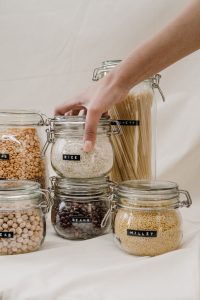 You may go shopping every week and have plenty of fresh fruits and vegetables in the refrigerator, but what if you can’t get out to shop or have friends stop over unexpected the day before you shop? Having a stock of staples that keep longer in the refrigerator or cupboard can help be a life saver if you want to make healthy meals and don’t have time for a grocery run. Here are a few healthy options that store well.
You may go shopping every week and have plenty of fresh fruits and vegetables in the refrigerator, but what if you can’t get out to shop or have friends stop over unexpected the day before you shop? Having a stock of staples that keep longer in the refrigerator or cupboard can help be a life saver if you want to make healthy meals and don’t have time for a grocery run. Here are a few healthy options that store well.
Dried beans can make a nice display in Mason jars, while also making a handy emergency staple.
Anyone with a smaller kitchen or who doesn’t have much cupboard space will appreciate being able to keep food that takes up little room. They also store longer in Mason jars. Packages of dried beans, chick peas and lentils fit that description. If you prefer not to go through the soaking process and storage space doesn’t matter, opt for canned beans and lentils. Both dried and canned legumes have a long shelf life, with canned ones lasting up to five years in the right conditions and dried ones kept properly can last over ten years.
Choose whole grains, such as brown rice, oats or quinoa to keep on hand.
Just like dried beans, whole grains last a long time when kept dry at room temperature, depending on the type you choose. They also store better in a Mason. Store them as you would dried beans, away from heat and moisture and in a tightly sealed bag or container. Grains can be kept in the freezer, however you must have a tight seal on the packaging. Ancient grains like amaranth, barley, spelt, farro, kamut, oats and bulger, can be great sources of fiber and nutrients. Shelf life can be as long as one year.
Some fruits or vegetables store for quite a long time and some last longer when frozen.
You don’t have to have fruits and vegetables that are unprocessed, as long as that processing is just canning or freezing, without adding sugar, other ingredients or chemicals. In fact, frozen fruits and vegetables may be fresher and nutrient dense than those you find in the store. They’re picked at peak ripeness and immediately frozen, not picked early and allowed to ripen on the way to the store. Fresh fruits and vegetables that last a long time stored in a cool place include apples, onions, garlic, beets, citrus fruits and winter squash.
- Full fat yogurt keeps for up to 3 weeks or longer. It makes a great instant dessert when combined with chopped fruit, some ripe banana and nuts.
- Keep condiments like pickles, spices and herbs on hand. Don’t forget apple cider vinegar. Apple cider vinegar is healthy and when herbs and spices are added, makes a great instant salad dressing. Distilled white vinegar is also disinfectant household cleaner.
- Eggs have a three-week shelf life in the refrigerator. They make a great addition to almost any meal, whether it’s breakfast, lunch or dinner. Like beans, they’re an inexpensive source of protein.
- Meat and chicken, when packed for the freezer properly can be stored up to a year. Fish can be stored up to five months. Have some on hand in the freezer with the date wrapped and stored, then always rotate new meat, poultry and fish toward the back.
For more information, contact us today at Liv Fitness

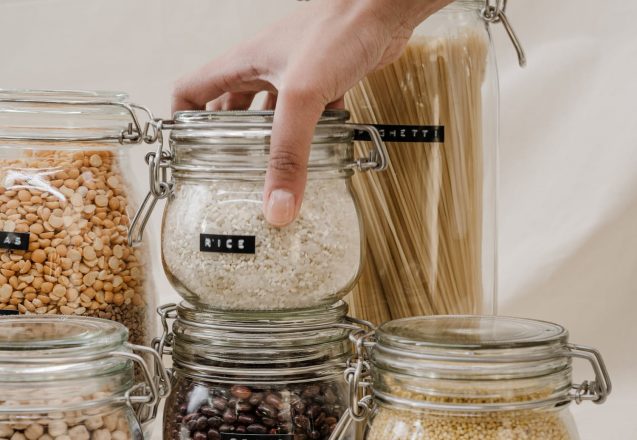
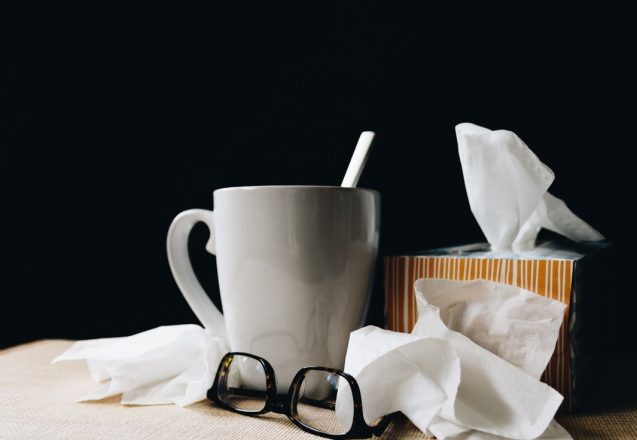
 Healthy foods can provide so much benefit for your body. It can help you lose weight, fight off chronic disease, reduce inflammation and pain, help build muscle tissue and create a healthy immune system. It just makes sense that in addition to working out, you focus on eating healthy. The first step is always to eliminate unhealthy food, such as foods high in added sugar or highly processed foods, like snack food or processed meats.
Healthy foods can provide so much benefit for your body. It can help you lose weight, fight off chronic disease, reduce inflammation and pain, help build muscle tissue and create a healthy immune system. It just makes sense that in addition to working out, you focus on eating healthy. The first step is always to eliminate unhealthy food, such as foods high in added sugar or highly processed foods, like snack food or processed meats.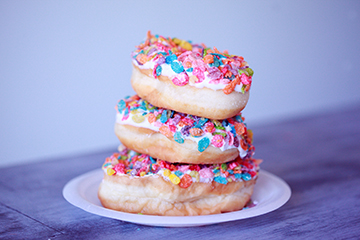
 Cutting out sugar is important if you want to be your healthiest. Occasionally, you may want a sweet treat beyond fresh fruit, which is the best way to get sugar. Which ones should you choose? Are some sugars worse than others? Sugar is in everything we eat today. In fact, it’s estimated that people consume 152 pounds of sugar each year. We eat one and a half times more sugar in a week than Americans at in a year 200 years ago, when two pounds was the typical consumption per year.
Cutting out sugar is important if you want to be your healthiest. Occasionally, you may want a sweet treat beyond fresh fruit, which is the best way to get sugar. Which ones should you choose? Are some sugars worse than others? Sugar is in everything we eat today. In fact, it’s estimated that people consume 152 pounds of sugar each year. We eat one and a half times more sugar in a week than Americans at in a year 200 years ago, when two pounds was the typical consumption per year.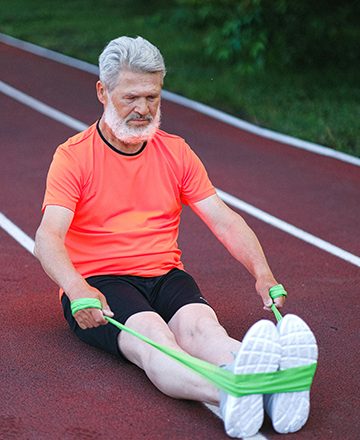
 If you’re over the age of 45 you know it gets harder to lose weight as you age. Seniors clients at Liv Fitness in Dublin, CA know they have to work a little harder to achieve their goals. That doesn’t mean it’s impossible, just a little harder. One reason losing weight is more difficult is that metabolism slows as you age. Sarcopenia—loss of muscle mass—occurs after the age of 30 at the rate of approximately 3 to 5% per year if you’re sedentary. That can affect your metabolism.
If you’re over the age of 45 you know it gets harder to lose weight as you age. Seniors clients at Liv Fitness in Dublin, CA know they have to work a little harder to achieve their goals. That doesn’t mean it’s impossible, just a little harder. One reason losing weight is more difficult is that metabolism slows as you age. Sarcopenia—loss of muscle mass—occurs after the age of 30 at the rate of approximately 3 to 5% per year if you’re sedentary. That can affect your metabolism.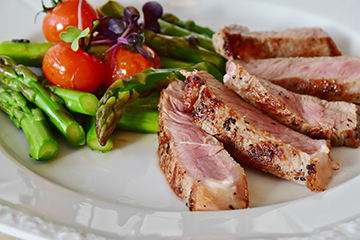
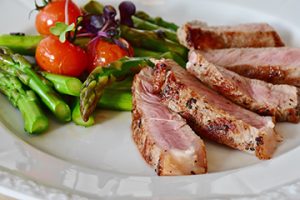 You do need to eat protein with every meal if you want to build muscles, lose weight or balance your hormones. Studies also show that for most people, eating more than 30 grams at one time provides no additional benefit for muscle development and the excess isn’t beneficial for most, except athletes. Considering a 3-ounce serving of salmon is about 25 grams of protein, 3-ounces of beef is approximately 29 grams of protein and a cup of cottage cheese is approximately 28 grams of protein, you can see how easily consuming more than 30 grams at one meal can be.
You do need to eat protein with every meal if you want to build muscles, lose weight or balance your hormones. Studies also show that for most people, eating more than 30 grams at one time provides no additional benefit for muscle development and the excess isn’t beneficial for most, except athletes. Considering a 3-ounce serving of salmon is about 25 grams of protein, 3-ounces of beef is approximately 29 grams of protein and a cup of cottage cheese is approximately 28 grams of protein, you can see how easily consuming more than 30 grams at one meal can be.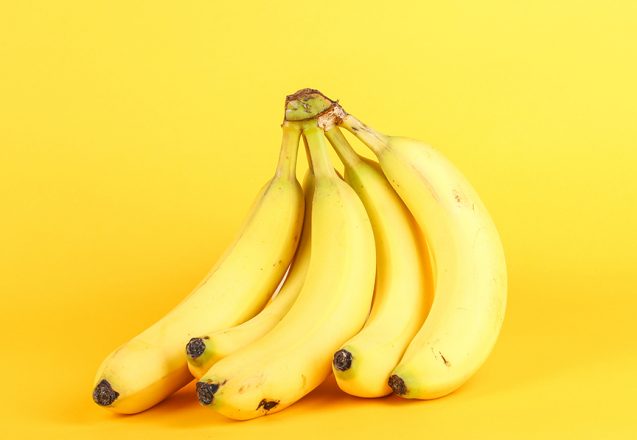
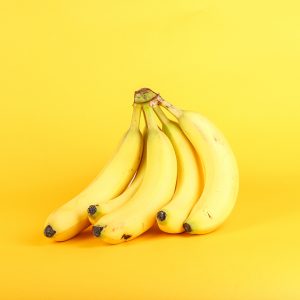 Do you need a boost a few hours after lunch? Are you dragging through your workout, unable to get through those final sets? Everyone needs a little pick-me-up at some time or another. Many opt for sugary treats, which only boost your energy for a short time. There are healthier foods for energy that will keep you going at peak performance longer and some drinks that may surprise you. Focus on more than just your snack. The food you eat at meals also plays a big role throughout the day. You need all the essential nutrients to function your best.
Do you need a boost a few hours after lunch? Are you dragging through your workout, unable to get through those final sets? Everyone needs a little pick-me-up at some time or another. Many opt for sugary treats, which only boost your energy for a short time. There are healthier foods for energy that will keep you going at peak performance longer and some drinks that may surprise you. Focus on more than just your snack. The food you eat at meals also plays a big role throughout the day. You need all the essential nutrients to function your best.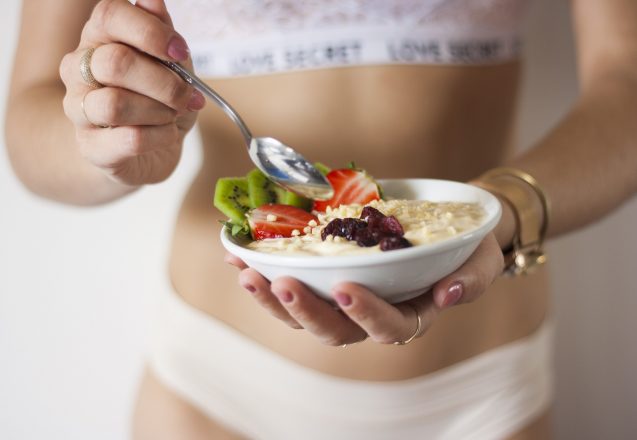
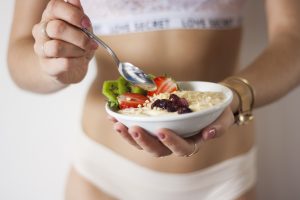 If you come to LIV Fitness in Dublin, CA, or use our app instead, you’ll notice we focus on more than just exercise. Having a healthy diet is just as important no matter what your fitness goal. No matter how long and hard you train, you’ll never out-train a bad diet. That’s why we emphasize a diet that eliminate foods high in sugar and those highly processed. It’s also why we focus on nutrient dense foods, whole foods and high fiber foods. High fiber foods not only fill you up and keep you feeling full longer, they feed beneficial microbes in your digestive tract to maximize health benefits.
If you come to LIV Fitness in Dublin, CA, or use our app instead, you’ll notice we focus on more than just exercise. Having a healthy diet is just as important no matter what your fitness goal. No matter how long and hard you train, you’ll never out-train a bad diet. That’s why we emphasize a diet that eliminate foods high in sugar and those highly processed. It’s also why we focus on nutrient dense foods, whole foods and high fiber foods. High fiber foods not only fill you up and keep you feeling full longer, they feed beneficial microbes in your digestive tract to maximize health benefits.
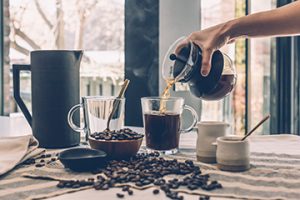 If you love your cup of coffee and drink several throughout the day, you may be a bit concerned whether it’s healthy. You may have had loved ones or even health professionals tell you that caffeine is bad. There are some benefits to getting caffeine naturally. For instance, a cup of coffee or tea before a workout may actually boost your performance. There are also some drawbacks to getting too much caffeine, which can easily happen if you use caffeine tablets.
If you love your cup of coffee and drink several throughout the day, you may be a bit concerned whether it’s healthy. You may have had loved ones or even health professionals tell you that caffeine is bad. There are some benefits to getting caffeine naturally. For instance, a cup of coffee or tea before a workout may actually boost your performance. There are also some drawbacks to getting too much caffeine, which can easily happen if you use caffeine tablets.
 If you read the labels, double check portion size. You might be surprised at what you find. For instance, if you’ve lived on Ramen noodles in college or weekends, you’ll be surprised to find that half a brick of noodles is one portion. If you’re like most people, you probably thought the entire package was one portion. Portion size can make the difference in weight loss or nutritional intake, but it can be hard to do. There are some simple ways to help you identify one portion.
If you read the labels, double check portion size. You might be surprised at what you find. For instance, if you’ve lived on Ramen noodles in college or weekends, you’ll be surprised to find that half a brick of noodles is one portion. If you’re like most people, you probably thought the entire package was one portion. Portion size can make the difference in weight loss or nutritional intake, but it can be hard to do. There are some simple ways to help you identify one portion.
 There’s lot of discussion of which foods are healthy and which should be avoided, which is good as long as you aren’t using broad categories like macronutrients. Macronutrients include fats, proteins and carbohydrates. Too often people vilify an entire group of macronutrients, like fat. The truth is, you need all the macronutrients to be healthy. While most fat is important, one group, trans fat can cause health issues, but there are some healthy trans fats, too. It’s the man made trans fat that’s bad, not the naturally occurring type found in meat and dairy.
There’s lot of discussion of which foods are healthy and which should be avoided, which is good as long as you aren’t using broad categories like macronutrients. Macronutrients include fats, proteins and carbohydrates. Too often people vilify an entire group of macronutrients, like fat. The truth is, you need all the macronutrients to be healthy. While most fat is important, one group, trans fat can cause health issues, but there are some healthy trans fats, too. It’s the man made trans fat that’s bad, not the naturally occurring type found in meat and dairy.